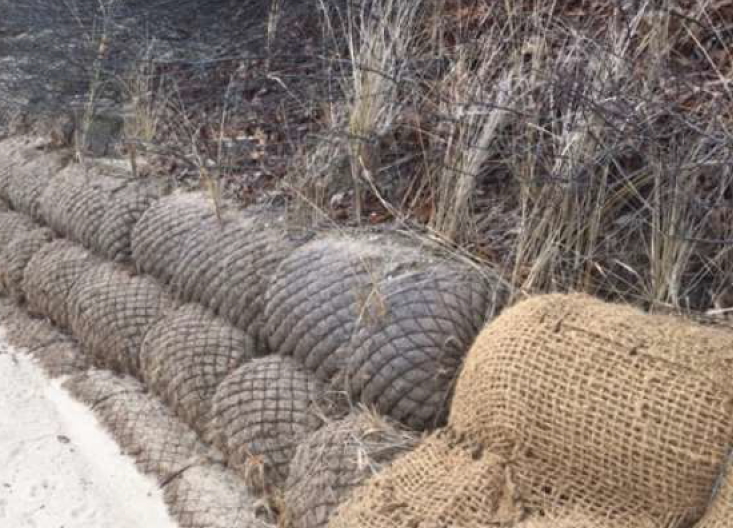The majority of the area we serve was created by glacial activity several thousands of years ago. These consolidated landforms can rise above sea level up to as much as 150 feet and are referred to as “Coastal Banks”. The unconsolidated landforms created by wind action and storm overwash are referred to as “Coastal Dunes”. This section focuses on Coastal Banks and the means by which they can be stabilized to protect property and structures.
Coastal banks, composed of consolidated sediments created by Glacial Processes, mostly erode at the toe by waves and tides. Nourishment strategy may provide an alternative to the permanent loss of the coastal bank itself. By placing limited amounts of sand along the toe of the bank, erosion activity will remove the sand and not the bank.
Other protective measures that have more longevity and are biodegradable include the use of coir or coconut fibers. Two basic products are mats (used to make sand-filled tubes, envelopes and lifts) and solid logs or rolls. Covered with sand and planted, rows of these coir products can last 7-20 years. More protective measures that include coastal engineering structures such as stone revetments, concrete or timber seawalls, geotubes etc. can only be permitted in Massachusetts to protect buildings built prior to August 1978.
Using sand to renourish the toe of the Coastal Bank is considered to be a solution that is found within the problem itself. The toe would protect the beach as well as the bank and could be renourished as necessary. This system could offer a low impact degree of protection on the ocean side coastal banks as well.

